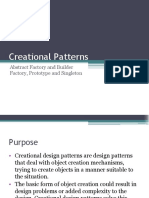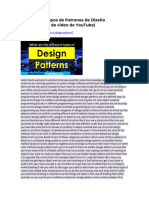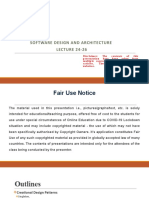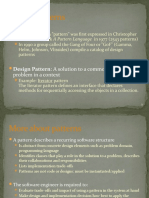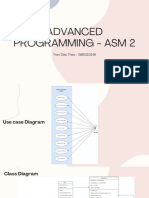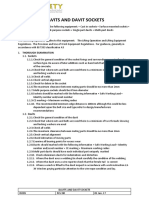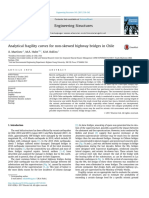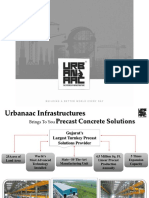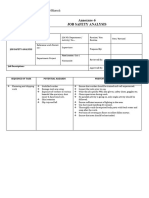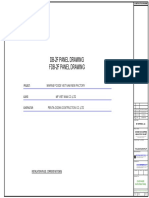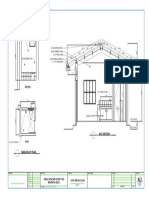0% found this document useful (0 votes)
134 views6 pagesCreational Design Patterns Guide
Creational patterns deal with object creation mechanisms to create objects in a suitable manner. Some common creational patterns include Abstract Factory, Builder, Factory Method, Object Pool, Prototype, and Singleton. Abstract Factory creates families of related objects without specifying their concrete classes. It provides a interface for creating objects from different families. Builder separates object construction from its representation. Factory Method creates objects from different derived classes.
Uploaded by
prasannaCopyright
© © All Rights Reserved
We take content rights seriously. If you suspect this is your content, claim it here.
Available Formats
Download as DOCX, PDF, TXT or read online on Scribd
0% found this document useful (0 votes)
134 views6 pagesCreational Design Patterns Guide
Creational patterns deal with object creation mechanisms to create objects in a suitable manner. Some common creational patterns include Abstract Factory, Builder, Factory Method, Object Pool, Prototype, and Singleton. Abstract Factory creates families of related objects without specifying their concrete classes. It provides a interface for creating objects from different families. Builder separates object construction from its representation. Factory Method creates objects from different derived classes.
Uploaded by
prasannaCopyright
© © All Rights Reserved
We take content rights seriously. If you suspect this is your content, claim it here.
Available Formats
Download as DOCX, PDF, TXT or read online on Scribd
/ 6


